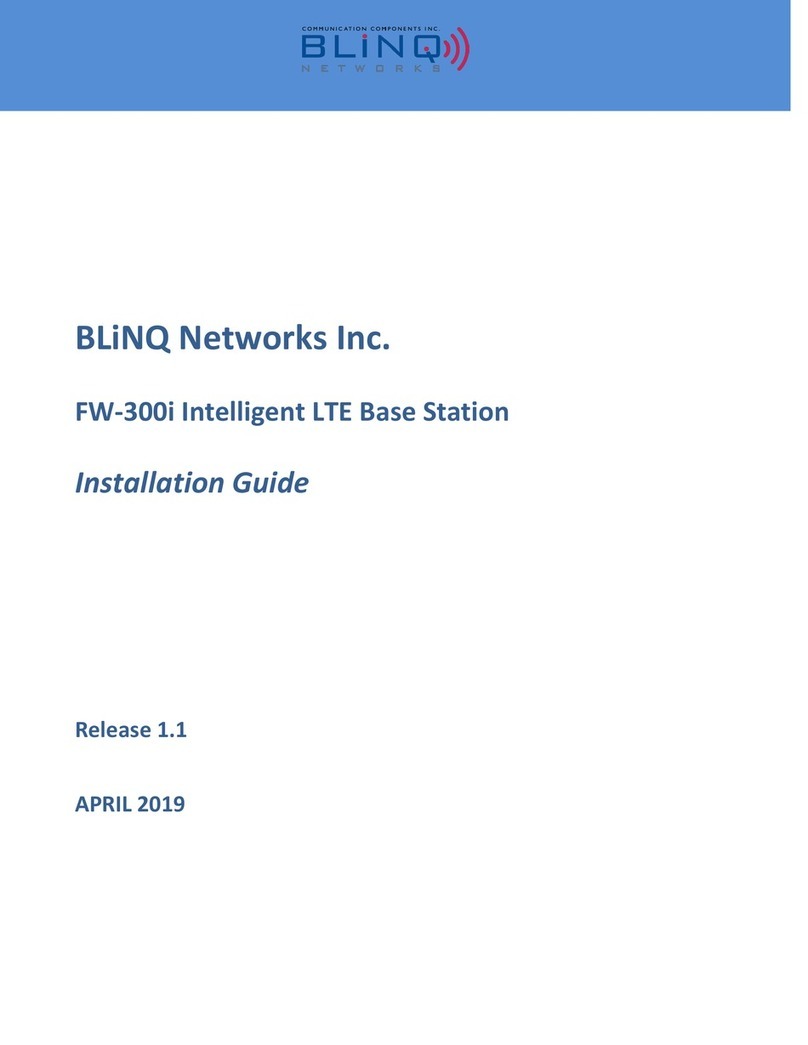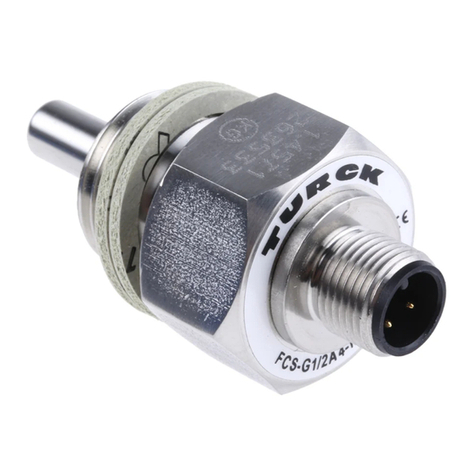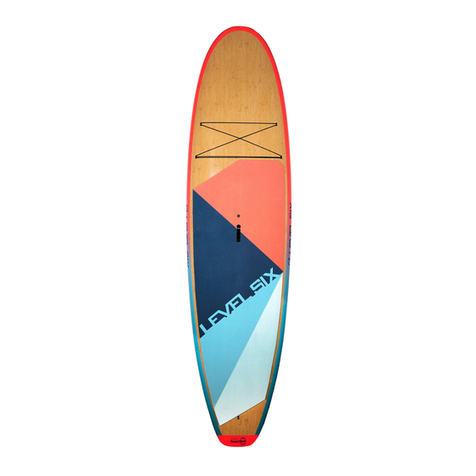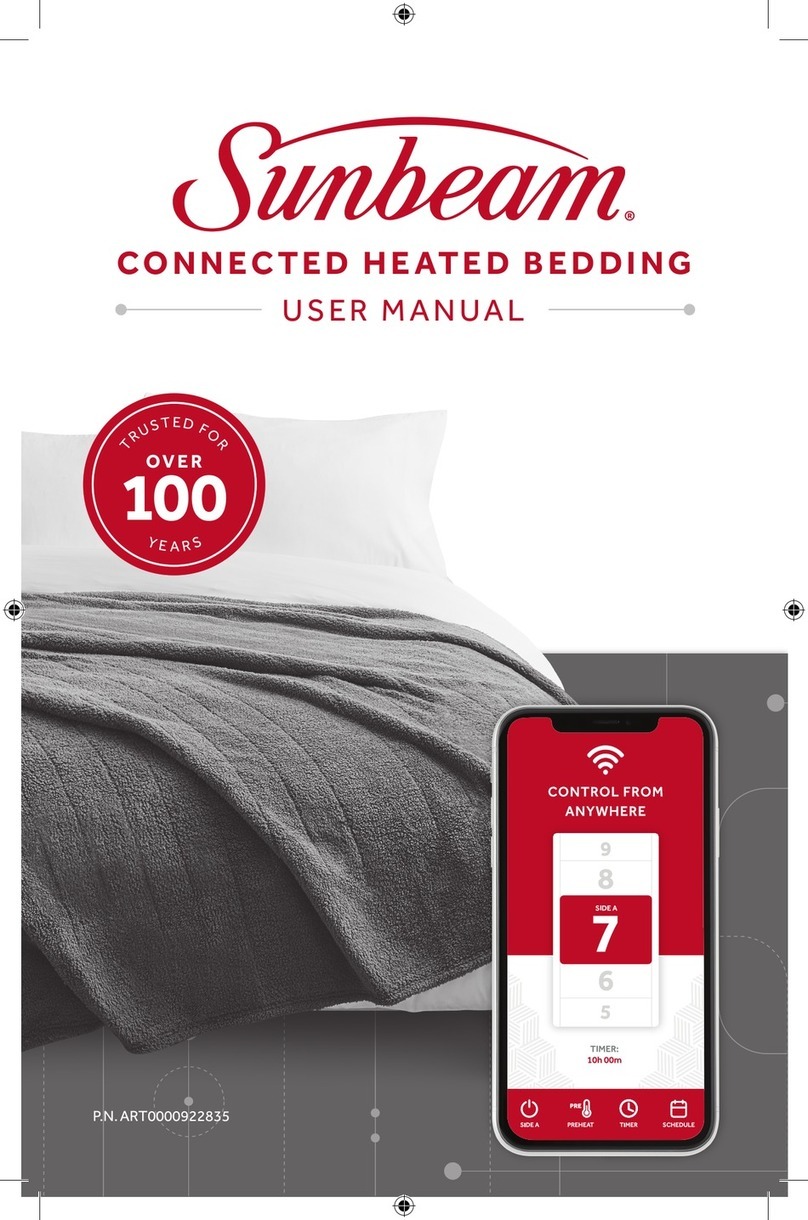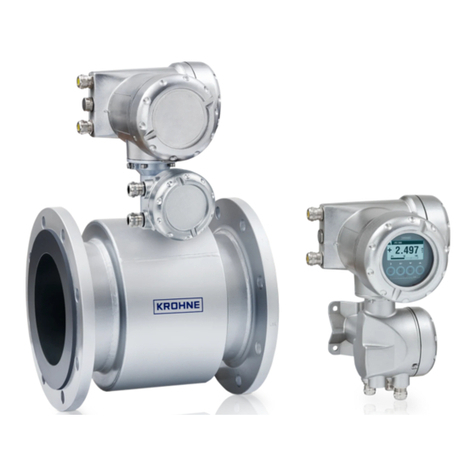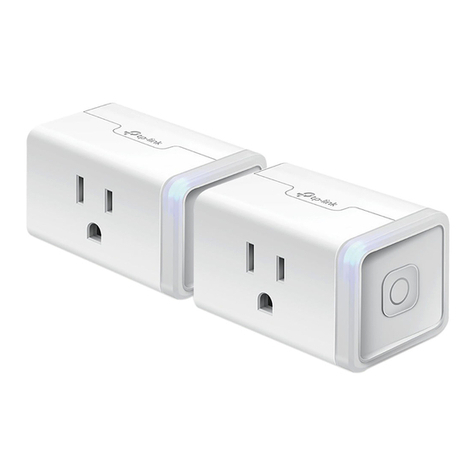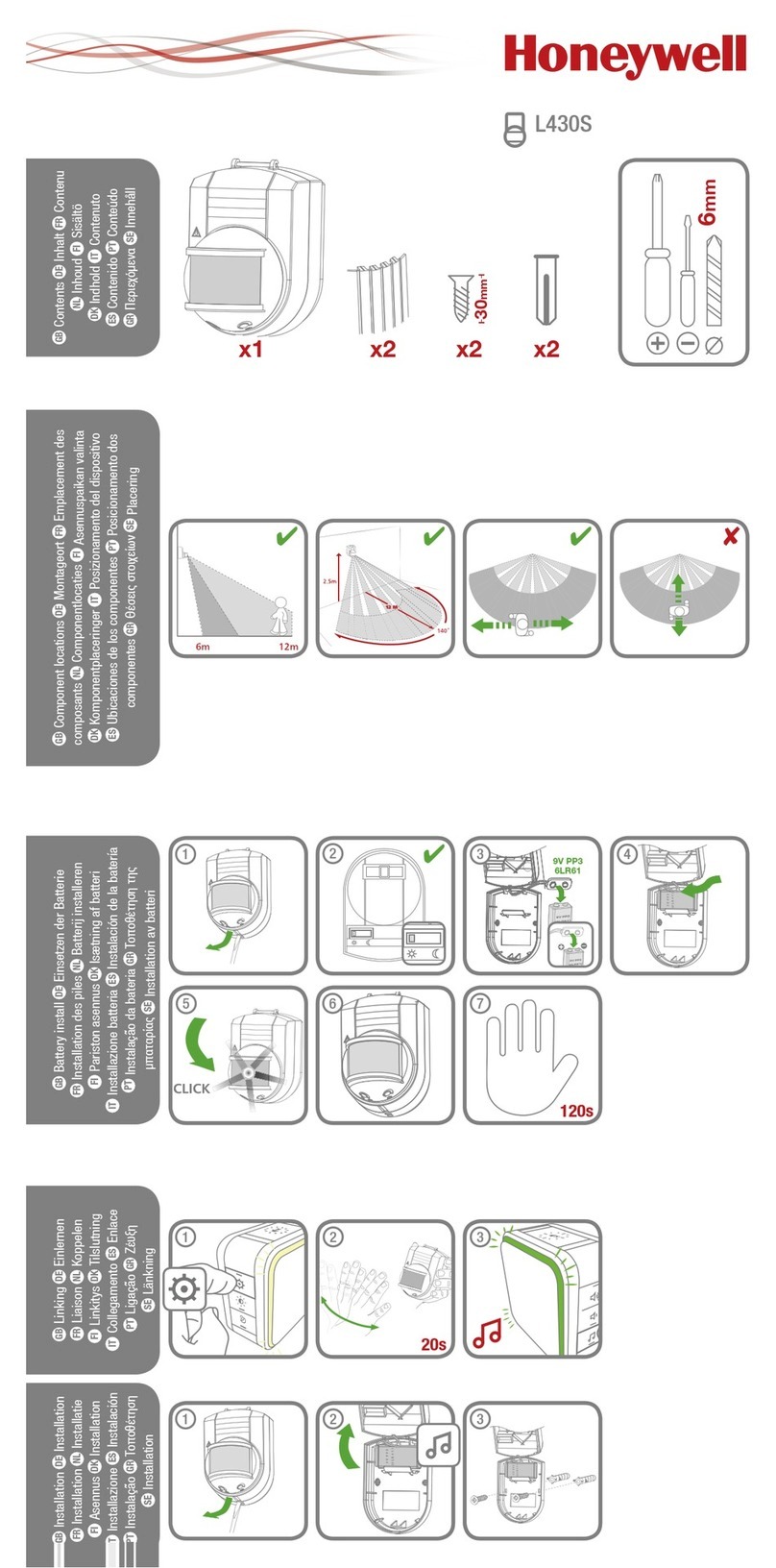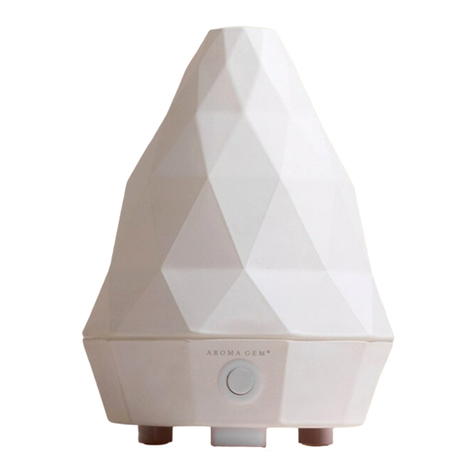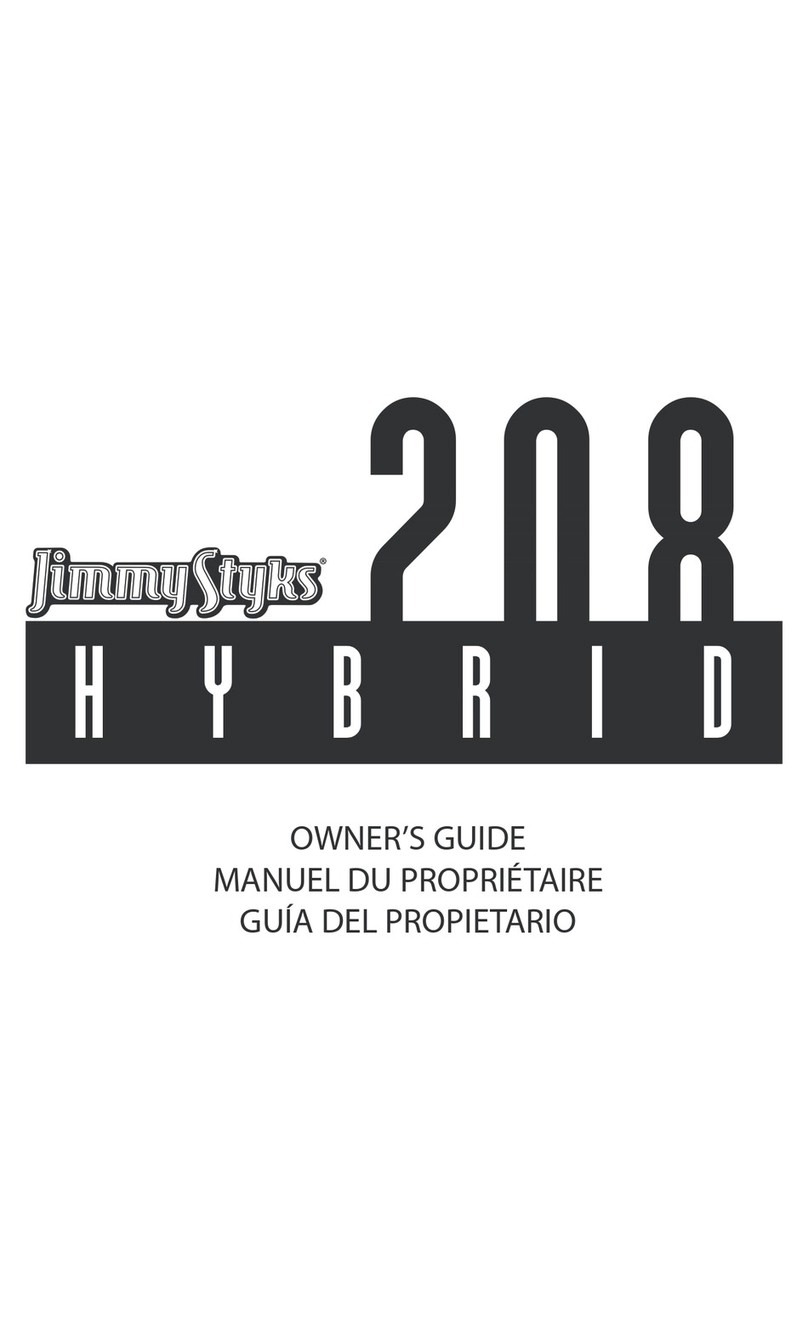BLiNQ Networks Inc. FW-300i User manual

BLiNQ Networks
FW-300i Intelligent LTE Base Station
User Manual
Release 2.0
Issue 01
June 2019

BLiNQ Networks Inc. FW-300i User Manual Release 2.0
Confidential - Restricted Use and Duplication i Issue 01
Revision History
DATE
RELEASE
ISSUE
REASON FOR ISSUE
November 2018
Release 1.0
Issue 01
Initial Release
June 2019
Release 2.0
Issue 01
Launching new WebUI
Contact Information:
BLiNQ Networks (CCARI)
140 Renfrew Drive, Suite 205
Markham, ON L3R 6B3
Web Site:
http://www.blinqnetworks.com

BLiNQ Networks Inc. FW-300i User Manual Release 2.0
Confidential - Restricted Use and Duplication ii Issue 01
Table of Contents
1About This Manual..................................................................................................................1
1.1 Manual Conventions......................................................................................................................2
2FW-300i System Overview.......................................................................................................3
2.1 Technical Features.........................................................................................................................4
2.2 Network Management Features ...................................................................................................6
2.2.1 FW-300i Security Protocols....................................................................................................8
Local Networking Protocols ...........................................................................................82.2.1.1
3Technical Specifications ..........................................................................................................9
3.1 System Parameters......................................................................................................................10
3.2 System Enclosure.........................................................................................................................12
3.3 Antenna Patterns.........................................................................................................................13
4Getting Started with the FW-300i ..........................................................................................14
4.1 FW-300i Web User Interface (WebUI).........................................................................................15
4.1.1 Common Tools.....................................................................................................................17
Title Bar: Tool Area.......................................................................................................174.1.1.1
Minimized and Maximized Menus...............................................................................184.1.1.2
System Information Bar ...............................................................................................184.1.1.3
4.1.2 System Status Messages......................................................................................................18
4.2 Default FW-300i Configuration....................................................................................................20
5Configuration........................................................................................................................21
5.1 System Configuration Process.....................................................................................................22
5.2 Configuration with the WebUI ....................................................................................................23
5.2.1 System..................................................................................................................................23
Configuring a System Name.........................................................................................245.2.1.1
Network Connectivity Parameters...............................................................................245.2.1.2
Advanced Options........................................................................................................275.2.1.3
5.2.2 Carriers.................................................................................................................................29
Setting up Carriers Baseline Parameters......................................................................295.2.2.1
Set Cells 0-2 RF Parameters .........................................................................................305.2.2.2
Advance Option............................................................................................................335.2.2.3
5.2.3 LTE Baseline .........................................................................................................................34
Configuring LTE Baseline Parameters ..........................................................................355.2.3.1
eNB Identifiers .............................................................................................................395.2.3.2
EPC Settings..................................................................................................................395.2.3.3
Advanced Options........................................................................................................405.2.3.4
5.2.4 CBSD.....................................................................................................................................43

BLiNQ Networks Inc. FW-300i User Manual Release 2.0
Confidential - Restricted Use and Duplication iii Issue 01
5.2.5 Management........................................................................................................................45
SSH/Web Users ............................................................................................................455.2.5.1
Syslog............................................................................................................................485.2.5.2
SNMP............................................................................................................................495.2.5.3
5.2.6 Verify, Save and Activate Current Running Configuration........................................................54
Verify and Save Running Configuration .......................................................................545.2.6.1
5.2.7 System Synchronization.......................................................................................................24
5.3 Configuration with the CLI...........................................................................................................55
5.3.1 System..................................................................................................................................55
Configuring a Hostname...............................................................................................555.3.1.1
Assigning IP Address.....................................................................................................565.3.1.2
Setting up IPv6 Address ...............................................................................................565.3.1.3
Configuring DNS Servers ..............................................................................................565.3.1.4
5.3.2 Carriers.................................................................................................................................57
Configure Channel Bandwidth and Frequency Mode..................................................575.3.2.1
Enabling Cells ...............................................................................................................585.3.2.2
Set Transmit Power......................................................................................................585.3.2.3
5.3.3 LTE Baseline .........................................................................................................................59
Assign the Maximum Cell Range..................................................................................595.3.3.1
Configure the Cell Identity Parameters........................................................................595.3.3.2
Assign an eNodeB ID ....................................................................................................605.3.3.3
5.3.4 EPC .......................................................................................................................................60
Set EPC Specific Information........................................................................................605.3.4.1
EPC Provisioning...........................................................................................................615.3.4.2
Embedded EPC.............................................................................................................625.3.4.3
External EPC .................................................................................................................655.3.4.4
5.3.5 CBSD.....................................................................................................................................69
5.3.6 Management via the CLI......................................................................................................70
User..............................................................................................................................715.3.6.1
SNMP............................................................................................................................725.3.6.2
Syslog Server ................................................................................................................735.3.6.3
5.3.7 Verify, Save and Activate Current Running Configuration...................................................75
Enable Sector and Radio Transmitters.........................................................................755.3.7.1
Verify and Save Running Configuration .......................................................................755.3.7.2
5.3.8 System Synchronization.......................................................................................................77
6Operation and Maintenance .................................................................................................79
6.1 Operation and Maintenance with the WebUI.............................................................................80
6.1.1 Software Upgrade................................................................................................................80
System Software Upgrade............................................................................................806.1.1.1

BLiNQ Networks Inc. FW-300i User Manual Release 2.0
Confidential - Restricted Use and Duplication iv Issue 01
6.1.2 Performance ........................................................................................................................83
eNB Statistics Page.......................................................................................................836.1.2.1
CPE Statistics Page .......................................................................................................836.1.2.2
Trace Log Files..............................................................................................................846.1.2.3
Measurements.............................................................................................................866.1.2.4
6.1.3 Events...................................................................................................................................88
Alarms (Logs) Page.......................................................................................................886.1.3.1
History Page .................................................................................................................896.1.3.2
6.2 Operation and Maintenance with the CLI ...................................................................................90
6.2.1 Software Upgrade................................................................................................................90
FW-300i CLI System Software Upgrade .......................................................................906.2.1.1
6.2.2 Performance ........................................................................................................................91
eNB Statistics................................................................................................................916.2.2.1
CPE Statistics ................................................................................................................926.2.2.2
Trace Log Files..............................................................................................................936.2.2.3
Measurements.............................................................................................................936.2.2.4
6.2.3 Events...................................................................................................................................98
6.3 Troubleshooting ........................................................................................................................101
7Customer Premise Equipment (CPE) ....................................................................................102
Appendix A BLiNQ Wireless Devices and RF Safety/Les appareils sans fil BLiNQ et la sécurité RF ..103
A.1 Equipment Compliance .............................................................................................................105
A.1.1 Federal Communications Commission (FCC) Notices........................................................105
Appendix B PCI Planning Guidelines............................................................................................106
Appendix C Alarms and Events (Fault Management) ...................................................................108
Appendix D List of Acronyms ......................................................................................................112
List of Figures
Figure 2-1 FW-300i Mounted on a Pole......................................................................................................3
Figure 2-2 FW-300i Sectors with Antenna Pattern .....................................................................................5
Figure 2-3 Antenna Sectors with Examples of CA Mapping........................................................................5
Figure 3-1 FW-300i (back and front respectively).....................................................................................12
Figure 3-2 Band 42, 43, 48 Antenna Patterns ...........................................................................................13
Figure 3-3 Band 46 Antenna Patterns.......................................................................................................13
Figure 4-1 Welcome FW-300i Screen........................................................................................................15
Figure 4-2 Title Bar –Tool Area Identification ..........................................................................................17

BLiNQ Networks Inc. FW-300i User Manual Release 2.0
Confidential - Restricted Use and Duplication v Issue 01
Figure 4-3 View Maximized.......................................................................................................................18
Figure 4-4 FW-300i WebUI System Success Status Message....................................................................18
Figure 4-5 FW-300i WebUI Warning Message..........................................................................................19
Figure 4-6 FW-300i WebUI Error Message................................................................................................19
Figure 5-1 FW-300i Configuration Process................................................................................................22
Figure 5-2 FW-300i Sectors .......................................................................................................................31
Figure 5-3 EPC Topology............................................................................................................................61
List of Tables
Table 3-1 FW-300i System Parameters.....................................................................................................10
Table 4-1 FW-300i Default Configuration Values......................................................................................20
Table 6-1 Troubleshooting......................................................................................................................101
Table C-1 List of Alarms...........................................................................................................................109
Table C-2 List of Events ...........................................................................................................................111

BLiNQ Networks Inc. FW-300i User Manual Release 2.0
Confidential - Restricted Use and Duplication 1 Issue 01
1About This Manual
This manual contains informational and overview chapters, and then continues as a guide to the
recommended order that you configure and then monitor your FW-300i system.
There are two methods to configure the FW-300i:
FW-300i Web-based User Interface (WebUI) (recommended) or
Command Line Interface (CLI)
Each chapter contains step-by-step instructions for the applicable method. Choose either the FW-300i
WebUI or the CLI method and follow the procedures under the desired chapter.
Note: If you need more information on the FW-300i WebUI or CLI, consult the separate manual:
“Complete WebUI and CLI Overview”
The WebUI menu structure is the basis for the order of the chapters and the processes contained within
those chapters:
Initial system setup: See Chapter 4, “Getting Started with the FW-300i”
Configuration: See Chapter 5, “Configuration”for configuring the FW-300i system using:
WebUI; See Section 5.2, “Configuration with the WebUI” or
Command Line Interface (CLI); See Section 5.3, “Configuration with the CLI”
Operation and Maintenance: See Chapter 6 , “Operation and Maintenance”
Software upgrade
Performance containing eNB and Customer Premise Equipment (CPE) statistics plus trace log
files and measurements
Events including alarms and past events (History)
Troubleshooting
Administration: See Chapter 5.2.5, “Management”(for WebUI) and Chapter 5.3.6, “Management
via the CLI”
User operations (Local security)
Simple Network Management Protocol (SNMP)
Syslog server

BLiNQ Networks Inc. FW-300i User Manual Release 2.0
Confidential - Restricted Use and Duplication 2 Issue 01
1.1 Manual Conventions
Bold words indicate actual page names, fields, buttons or commands within the software.
Examples:
In the LTE Baseline Parameters section, set the Cell range to the desired kilometer range. The range
is from 1 to 100 kilometers.
Most FW-300i WebUI pages have a Commit button in the top right hand corner.
If not already there, access the device via a CLI and enter the following commands:
Blinq eNB# config
Entering configuration mode terminal
Blinq eNB(config)# radio rf 0
Blinq eNB(config-rf-0)# tx-power 18
Blinq eNB(config-rf-0)# top
Blinq eNB(config)# radio rf 1 tx-power 18
Blinq eNB(config)# radio rf 2 tx-power 18
Blinq eNB(config)# commit
Commit complete.
Blinq eNB(config)#
Commit Button

BLiNQ Networks Inc. FW-300i User Manual Release 2.0
Confidential - Restricted Use and Duplication 3 Issue 01
2FW-300i System Overview
BLiNQ Networks is a pioneer of next-generation wireless solutions that feature intelligent systems
capable of adapting to the radio frequency environment to maximize capacity and performance.
Figure 2-1 FW-300i Mounted on a Pole
The BLiNQ FW-300i system is a tri-sector and tri-carrier Long-Term Evolution (LTE) Evolved Node B (eNB)
with the capability to operate in the following bands: 42, 43, 46 and 48 (Citizens Broadband Radio
Service (CBRS)). With a distinctive feature set and integration level, the FW-300i brings an ideal solution
to an “install anywhere” micro-base transceiver station (micro-BTS) that fully serves private networks,
fixed wireless access and mobility use cases.

BLiNQ Networks Inc. FW-300i User Manual Release 2.0
Confidential - Restricted Use and Duplication 4 Issue 01
2.1 Technical Features
Some of the main technical product characteristics are as follows:
‘All-In-One’ Fully Integrated Solution: The FW-300i solution packs a three (3) sector 180-degree
integrated antenna (60-degrees per sector) with an integrated Global Positioning System (GPS) sync
source. There is also an additional option for an integrated Evolved Packet core (EPC), making
deployment of the FW-300i as simple as deploying Wi-Fi.
Compact All-Outdoor and Zero-Footprint Form Factor: The FW-300i packs three (3) carrier radios in
one compact form. The FW-300i meets IP67 requirements for operation in tough environments with
the capability to handle temperature variations from extreme cold to extreme heat. BLiNQ’s state-
of-the-art and unique mounting design allows an unobtrusive deployment of multiple FW-300i
systems on towers, poles, building sidewalls or rooftops with ease (See the “FW-300i Installation
Guide” for more details).
For CBRS Band: The FW-300i implements a native Spectrum Access System client that fully enables
easy Citizens Broadband Radio Service (CBRS) deployments. With each cell designed to operate as
an independent Type B CBSD, the FW-300i can operate on a Priority Access or General Authorized
Access basis in the CBRS band consistent with Title 47 CFR Part 96.
Industry Standard TDD LTE-A Release 13 Radio Interface: The FW-300i solution utilizes industry
standard Time Division Duplexing (TDD) LTE-A Release 13 radio capabilities. This allows for robust
wireless performance, with extremely cost-effective deployments of Customer Premise Equipment
(CPE).
Configuration: The FW-300i supports all LTE TDD frame configurations but focuses on Category 1
and Category 2.
Carrier Aggregation: The FW-300i supports carrier aggregation (CA) with up to three (3) Component
Carriers (3CC), allowing for increased throughput to support high bandwidth deployments in both
dense suburban and rural environments.
Software Controlled Adaptive Carrier Steering: The FW-300i is able to steer, with variable capacity,
over different areas across 180 degrees of azimuth. The unit powers this steering ability by its
integrated antenna system of three (3) sectors of 60 degrees each. This flexibility allows the FW-300i
to support both large coverage models, as well as capacity driven models. The FW-300i supports
three modes via software (SW) configuration:
3 Sector covering 180 degrees each of 1 x 20 MHz carrier
2 Sector covering 120 degrees (one sector with 2 x 20 MHz carriers and one sector with 1 x
20MHz carrier)
1 Sector covering 60 degrees: one sector with 3 x 20 MHz carriers

BLiNQ Networks Inc. FW-300i User Manual Release 2.0
Confidential - Restricted Use and Duplication 5 Issue 01
Figure 2-2 FW-300i Sectors with Antenna Pattern
Figure 2-3 Antenna Sectors with Examples of CA Mapping
Multiple Input Multiple Output (MIMO): The FW-300i system features standard 2x2 MIMO
configurations in both downlink (DL) and uplink (UL) directions for each active sector.
High Modulation and Coding Scheme (MCS): The FW-300i hardware supports high MCS:
Downlink (DL): 256 Quadrature Amplitude Modulation (QAM) and
Uplink (UL): 64 QAM
Please refer to the latest SW release notes for the availability of these features.
Quality of Service (QoS): The FW-300i system implements advanced features such Traffic
Classification, Admission Control, Rate Shaping plus Active Scheduling and Queue Management in
order to deliver the most optimal quality of service.
3 Sector 2 Sector 1 Sector

BLiNQ Networks Inc. FW-300i User Manual Release 2.0
Confidential - Restricted Use and Duplication 6 Issue 01
2.2 Network Management Features
The FW-300i implements complete web-based user interface (WebUI) and Command Line Interface (CLI)
functionality, plus strong Element Management System (EMS) implementation that suits any type of
customer needs.
FW-300i Web Interface (WebUI) —Accessible via HTTP(S), the FW-300i WebUI provides an
interactive visual toolset that allows you to modify the full configuration of the FW-300i system, as
well as view state, fault and performance indicators. The FW-300i WebUI displays performance data
using visual charts and provides applications to visualize up to 24 hours of historical performance
data stored on the system.
FW-300i Command Line Interface (CLI) —Accessible via Secure Shell protocol (SSH), the FW-300i CLI
provides a well-structured command language in an industry standard idiom. The interface allows
you (or third-party system) to manipulate the full configuration of the unit and examine state,
performance and fault indicators.
Element Management System (EMS)—The BLiNQ EMS system, powered by the robust Web
Network Management System (WebNMS) platform, enables a state-of-the-art Operations,
Administration, Maintenance and Provisioning (OAM&P) feature set. The OAM&P possesses a
strong set of interfaces to connect to northbound provision systems.
Providing comprehensive Fault, Configuration, Accounting, Performance, and Security (FCAPS)
functionality, the FW-300i system uses standard networking protocols and tools that facilitate a full
range of element and network management operations—from local craft configuration, to complex
integration in Simple Network Management Protocol (SNMP) or script-based Element Management
System (EMS) and Operations Support System (OSS) infrastructures.
Community-Based Simple Network Management Protocol version 2 (SNMPv2c) and SNMP version
3 (SNMPv3) —The SNMPv2c and SNMPv3 interfaces provide complete access to configuration,
state, performance and fault information in the FW-300i system. This allows for high levels of
integration in existing EMS/OSS infrastructure for monitoring, Service Level Agreement (SLA)
assurance and administrative task automation.
Syslog —The syslog interface allows the FW-300i system to send standard syslog fault management
information (that is, syslog alarms, events and log entries) to external syslog servers.
All network management interfaces on the FW-300i system are accessible via Transmission Control
Protocol/Internet Protocol (TCP/IP) and User Datagram Protocol/IP (UDP/IP). The FW-300i system
provides the following IP addresses for management purposes:
Local Craft IP Address —A fixed, non-routable IP address: 169.254.1.1 which is always accessible
without VLAN encapsulation. This address is always present on eNodeB modules. You use this
address in situations where the Management IP Address (see below) is not configured or is
unavailable, including initial commissioning and field troubleshooting scenarios. Typically, a
technician accesses the Local Craft IP Address by plugging directly into the RJ45 Ethernet port of the
module.
WAN IPv4 IP Address —A user assigned, static or Dynamic Host Configuration Protocol (DHCP) IPv4
address. The device uses this IPv4 address to exchange traffic and control information with the
network. The operator will use this IPv4 address to remotely manage the system. A user-
configurable Virtual Local Area Network (VLAN) encapsulates all traffic to and from the WAN
interface.

BLiNQ Networks Inc. FW-300i User Manual Release 2.0
Confidential - Restricted Use and Duplication 7 Issue 01
The FW-300i system provides the following network management functions:
Configuration Management —The system configuration covers several functional areas:
Radio Link Commissioning
Radio Link Commissioning parameters (for example, radio frequency, synchronization, TDD
configuration) needs to be set before system deployment and are particular to the operator RF
network.
EPC Configuration
The Evolved Packet Core (EPC) Configuration parameters configure the EPC interface (e.g. Public
Land Mobility Network Identifier (PLMN-ID), Mobility Management Entity (MME) interface,
Serving Gateway (SGW) interface).
Security Configuration
Security Configuration parameters allow you to secure access or disable specific management
interfaces (add local user accounts) and perform various unit administrative operations.
EMS Interfaces Configuration
Element Management Systems (EMS) enables you to configure SNMP, Syslog, plus the
automatic upload of Performance Management (PM) files.
All parameters in these areas are accessible via all of the network management interfaces previously
described.
Fault Management —The FW-300i system provides fault management service via a comprehensive
list of alarms and events. Some of the potential faults that the system detects and initiates alarms
on include:
radio and Ethernet link failures
hardware module failures
synchronization faults
software module faults
SNMP traps or Syslog relays all alarms and events to higher level managers. The system also allows
you to access active alarm and event history information using either the FW-300i CLI or WebUI.
Performance Management —The FW-300i system maintains a comprehensive set of performance
counters and indicators to facilitate:
performance monitoring
Service Level Agreement (SLA) monitoring
troubleshooting
The system provides a full set of Ethernet counters at the interface, module and service flow level,
as well as radio quality indicators at the module level. The system makes all the counters available
as either instantaneous values (via SNMP, CLI or WebUI) or historical performance files. The system
maintains 24 hours of performance data at a 15 minute granularity. The eNodeB only stores
performance files and can be extracted from the system on-demand.

BLiNQ Networks Inc. FW-300i User Manual Release 2.0
Confidential - Restricted Use and Duplication 8 Issue 01
Administrative Operations —The FW-300i system provides tools that allow you to perform all
standard unit administration operations using the provided remote network management
interfaces. The system supports remote software upgrade operations using either a pull paradigm
(that is, the system modules retrieve the software package files from external FTP servers) or a push
scheme using the FW-300i WebUI (that is, you upload a software package file to the system modules
using the FW-300i WebUI). The FW-300i system also supports remote configuration backups and
backup restoration.
2.2.1 FW-300i Security Protocols
The FW-300i system supports local security access regarding system configuration and maintenance.
With this model, you can, through CLI or WebUI, configure the user name, password and access level for
the user. The configuration is stored on the FW-300i.
Local Networking Protocols2.2.1.1
Local security protocol is the default protocol for the FW-300i modules. This means that you set each
username, password and access level on each module. Each module stores the configuration data in its
configuration database.
To configure the local security:
with the WebUI see Section 5.2.5.1, “SSH/Web User” or
with CLI, see Section 5.3.6.1, “User”.

BLiNQ Networks Inc. FW-300i User Manual Release 2.0
Confidential - Restricted Use and Duplication 9 Issue 01
3Technical Specifications
This chapter covers:
System Parameters,
System Enclosure and
Antenna Patterns.

BLiNQ Networks Inc. FW-300i User Manual Release 2.0
Confidential - Restricted Use and Duplication 10 Issue 01
3.1 System Parameters
Table 3-1 lists the FW-300i system parameters for the North American (NA) product line.
Table 3-1 FW-300i System Parameters
RADIO SPECIFICATIONS
Frequency Band
TDD LTE Bands: 42, 43, 48, 46
Transmit Power (Bands 42, 43, 48)
Maximum 33 dBm per sector of 60 degrees (deg)
17 dBi Integrated Antenna 50 dBm EIRP/Sector
Transmit Power (Band 46)
Maximum 26 dBm (Typically (Typ.) 19 dBm) per each 60 deg sector
17 dBi Integrated Antenna 36 dBm EIRP/Sector
Channel Bandwidth
10, 20 MHz
MIMO
2TX x 2RX (several possible MIMO configurations)
LTE Compliance
3GPP Release 10 (SW upgrade to Release 13)
PERFORMANCE AND ATTRIBUTES
Connected/Active User Equipment (UE)
Up to 96 active users per sector; 288 active users per box
Carrier Aggregation
Supports contiguous and non-contiguous 1CC, 2CC, 3CC, covers full
CBRS band (150 MHz)
Throughput DL TDD
3GPP Release 10 (Software (SW) upgrade to Release 13)
Throughput UL TDD
3GPP Release 10 (SW upgrade to Release 13)
Operating Mode
TD-LTE
Power Consumption (Band 46)
80 Watts (W) maximum
Power Consumption (Band 42, 43, 48)
150 W maximum
Power
48 VDC
Connectivity
Default: 1 x Copper 1000BaseT; Optional: 1 x SFP
Synchronization
Integral GPS antenna (GPS, GLONASS, BeiDou),
Optional: External GPS, 1588v2
Citizens Broadband Radio Service (CBRS)
CBSD Type B SAS Support
Embedded Evolved Packet Core (EPC)
Software Option
OPERATIONS, ADMINISTRATION AND MAINTENANCE (OAM)
Configuration
WebUI/CLI, radio and Ethernet performance monitoring
EMS Integration
SNMP v2c/v3
OAM Protocols
NETCONF, HTTP(S), TCP/IP, UDP, (S)FTP, SSH, TR-069/TR-196
ANTENNA SPECIFICATIONS CBRS BANDS 42/43 (48)
Gain
17 dBi
Azimuth Coverage (-5 dB)
180 degrees
Azimuth Beamwidth (-3 dB)
45 degrees
Azimuth Beamwidth (-5 dB)
60 degrees
Elevation Beamwidth (-3 dB)
10 degrees
Electrical Downtilt
0 degree

BLiNQ Networks Inc. FW-300i User Manual Release 2.0
Confidential - Restricted Use and Duplication 11 Issue 01
ANTENNA SPECIFICATIONS CBRS BANDS 42/43 (48) (CONT.)
Azimuth Sidelobe
< -25 dB (Typ.)
Front-to-Back Ratio @180 Degrees
> 30 dB (Typ.)
Co-Polar Port-to-Port Isolation
15 dB (Typ.)
Cross-Polarization Port-to-Port Isolation
> 20dB (Typ.)
Max. Voltage Standing Wave Ratio (VSWR)
1.5:1
Polarization
Dual Pol 45 degrees
Lightning Protection
DC Ground
MECHANICAL
Dimensions (L x W x D)
13.78" x 22.4" x 8.9" (350 x 570 x 227 mm)
Survival Wind Speed
> 124 mph (200 km/hour)
Weight
26.5 lbs. (12.0 Kg)
Operational Temperature
-40 to 60 degrees Celsius (-40 to 140 degrees Fahrenheit)
Mechanical Uptilt/Downtilt
0 - 10 degrees

BLiNQ Networks Inc. FW-300i User Manual Release 2.0
Confidential - Restricted Use and Duplication 12 Issue 01
3.2 System Enclosure
The enclosure for the FW-300i is a rugged IP67 casing, supplied with an optional mounting bracket with
both horizontal and vertical tilt capabilities to mount the unit on towers, poles and building side walls.
These cases allow for full flexibility in the range of orientation to establish best connectivity between the
FW-300i and Customer Premise Equipment (CPE).
Figure 3-1 FW-300i (back and front respectively)
The mechanical enclosure for the FW-300i has an integrated antenna. There are two ports on the
bottom of the FW-300i: a -48VDC power port and an Ethernet port for network connectivity. The
Ethernet port comes pre-populated with 1 Gbps (100 Base-T) copper Small Form-factor Pluggable (SFP).
If needed, you can replace this SFP with 1 Gbps fiber SFP.
An integrated Global Positioning System (GPS) antenna is included in the FW-300i antenna, yet if
needed, the FW-300i has a SYNC port, to use for example, as an optional external GPS Pulse per Second
(PPS) source. Therefore, there is no need for additional synchronization equipment which reduces total
cost of ownership.

BLiNQ Networks Inc. FW-300i User Manual Release 2.0
Confidential - Restricted Use and Duplication 13 Issue 01
3.3 Antenna Patterns
The FW-300i covers up to 180 degree of azimuth which is powered by an integrated adaptive antenna
system of 3 x 60 degree sectors. Following are the antenna patterns for Band 42, 43, 48 and then by the
antenna patterns for Band 46.
Figure 3-2 Band 42, 43, 48 Antenna Patterns
Figure 3-3 Band 46 Antenna Patterns

BLiNQ Networks Inc. FW-300i User Manual Release 2.0
Confidential - Restricted Use and Duplication 14 Issue 01
4Getting Started with the FW-300i
To initially log in to the FW-300i:
Notes:
If required, consult the “FW-300i Installation Guide”for instructions on powering the unit.
If you need more information on the FW-300i WebUI, consult the separate manual: “Complete
WebUI and CLI Overview”
Connect your computer directly to the FW-300i through an Ethernet cable, and then check your
connectivity by pinging the FW-300i using 169.254.1.1 (the Craft IP address that is always
accessible).
Note: You need to statically set the IP address on the computer to 169.254.1.x subnet before
pinging.
After successfully pinging the Craft IP address:
Use a Secure Shell (SSH) client to log on to the FW-300i CLI using a SSH connection to the pinged
169.254.1.1 address. However, you must install SSH version 2.0 or higher client software on your
host computer (you can use SSH version 1.0, but it is not recommended), or
Open a web browser and navigate to the pinged 169.254.1.1 to bring up the FW-300i WebUI
When prompted for login credentials, enter the default username and password: admin/admin.
To complete the initial system setup, choose either the WebUI or the CLI method and follow the
procedures under the desired chapter.
Other manuals for FW-300i
3
Table of contents
Other BLiNQ Networks Inc. Accessories manuals
Popular Accessories manuals by other brands

NuAire
NuAire NU-1000 Operation and maintenance manual
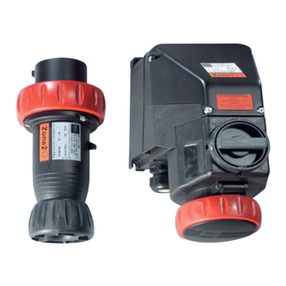
Stahl
Stahl 7571/11 Series operating instructions

Zemic
Zemic L6P installation manual

Dometic
Dometic DELIBOX DEL90H Installation and operating manual
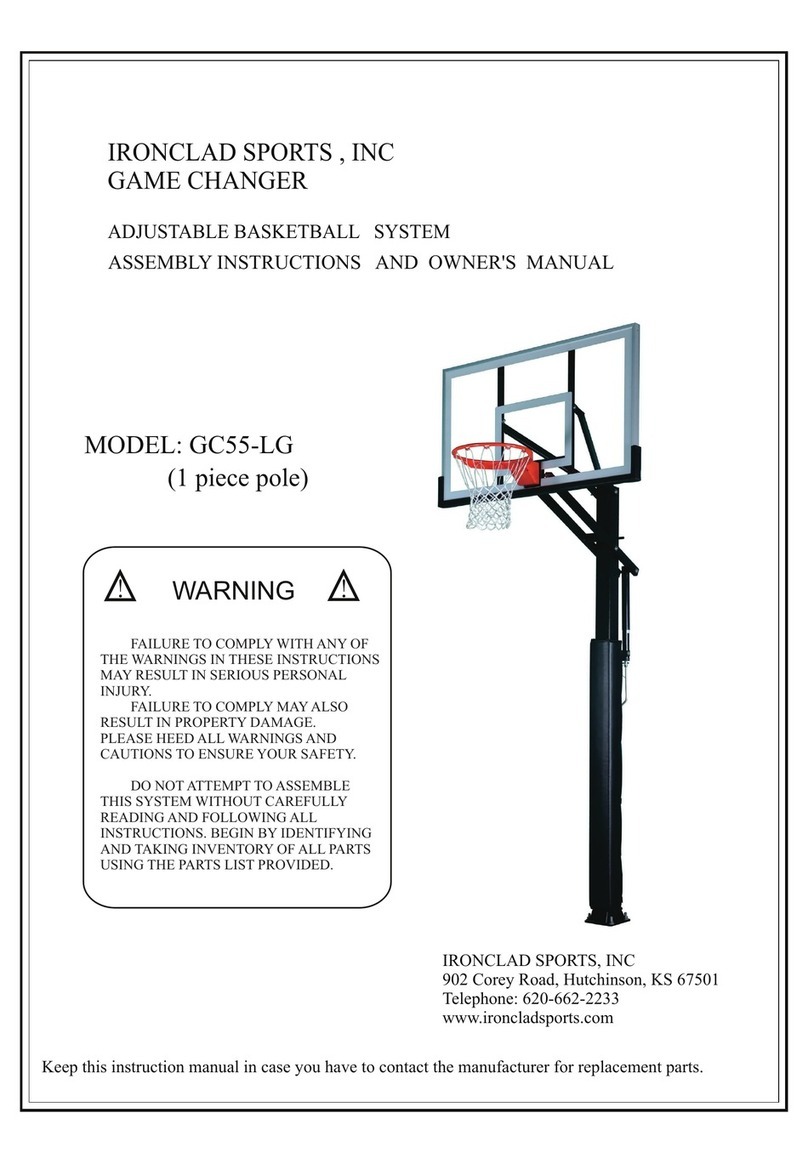
Ironclad
Ironclad GC55-LG Assembly instructions and owner's manual
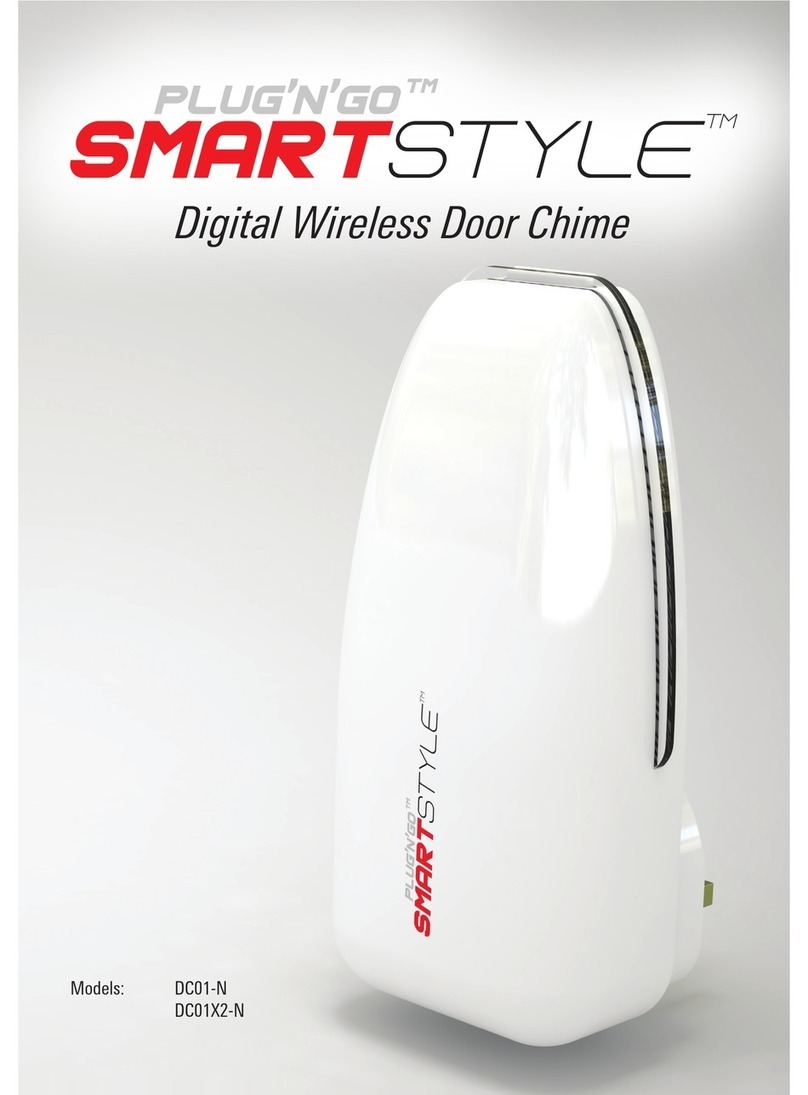
Plug'n'Go
Plug'n'Go SmartStyle DC01X2-N manual
